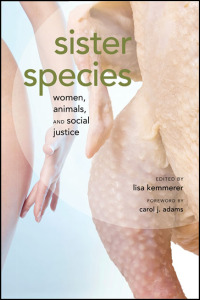 More and more we read and hear about the treachery of the corn-based biofuel, ethanol. Authors and commentators report that ethanol production is stealing corn from the mouths of the hungry, driving up food prices—exacerbating poverty and causing yet more starvation.
More and more we read and hear about the treachery of the corn-based biofuel, ethanol. Authors and commentators report that ethanol production is stealing corn from the mouths of the hungry, driving up food prices—exacerbating poverty and causing yet more starvation.
Ethanol claims an increasing portion of the corn market each year, and now consumes something like 25% of the corn harvest. Reclaiming this 25% might help feed the hungry, but this change comes with a cost—we burn more oil, contributing to oil wars and global climate change (among other very serious negative side effects of petroleum dependence). Nonetheless, if reducing or eliminating ethanol is our best bet for feeding the hungry, then we must reduce or eliminate ethanol—despite these costs. Is ethanol our best bet for finding ways to redirect grains to feed the hungry?
In truth there is a much more appropriate target: Animal agriculture. Cattle, pigs, chickens, and turkeys consume 70% of the United States grain crop; feeding these grains to farmed animals is extremely wasteful. In the process of cycling grains through other animals to produce flesh, eggs, and milk, we lose vital nutrients and billions of consumable calories. In The Mathematics of Starvation, Tom Spontelli notes that ranchers cycle 24,000 calories of grain into cattle to retrieve 1500 calories from flesh: a 94% caloric loss. Every time we sink our teeth into a cow’s flesh, we vote to keep sending 6,000 calories of the world’s grain (which could feed a child for 10 days) into a cow’s belly to ultimately retrieve only 375 calories. If we want to feed hungry people, we need to eat grains directly rather than feed vast quantities of grain to cattle. When we cycle grains through cattle we also lose 90% of grain’s protein, 99% of the carbohydrate, and 100% of fiber: We exchange heart-healthy grains for a coronary surprise and a ticket to obesity.
Some 4000 children die every day from starvation. These staggering numbers are somewhat meaningless in a world saturated with critical problems, many of which are closer to home for those likely to be reading on the internet. Perhaps we need to see the sunken face, the skeletal limbs, and the dull eyes of just one of these human beings, and the desperation of their mothers and fathers, to understand what the slow starvation of 4000 children means in terms of suffering. Maybe it is because the hungry are mere statistics, or perhaps, because these authors and commentators like to eat chicken and cheese, they find it more appealing to attack ethanol rather than change their diet. If we want to feed our hungry neighbors, we need to eat grains directly, and not support flesh, dairy, or egg markets with our consumer dollars: Vote with your teeth.
*****
Lisa Kemmerer, associate professor of philosophy and religion at Montana State University, Billings, is an artist, activist, and wilderness adventurer who has traveled the world extensively. She is editor of the new book Sister Species: Women, Animals, and Social Justice.
